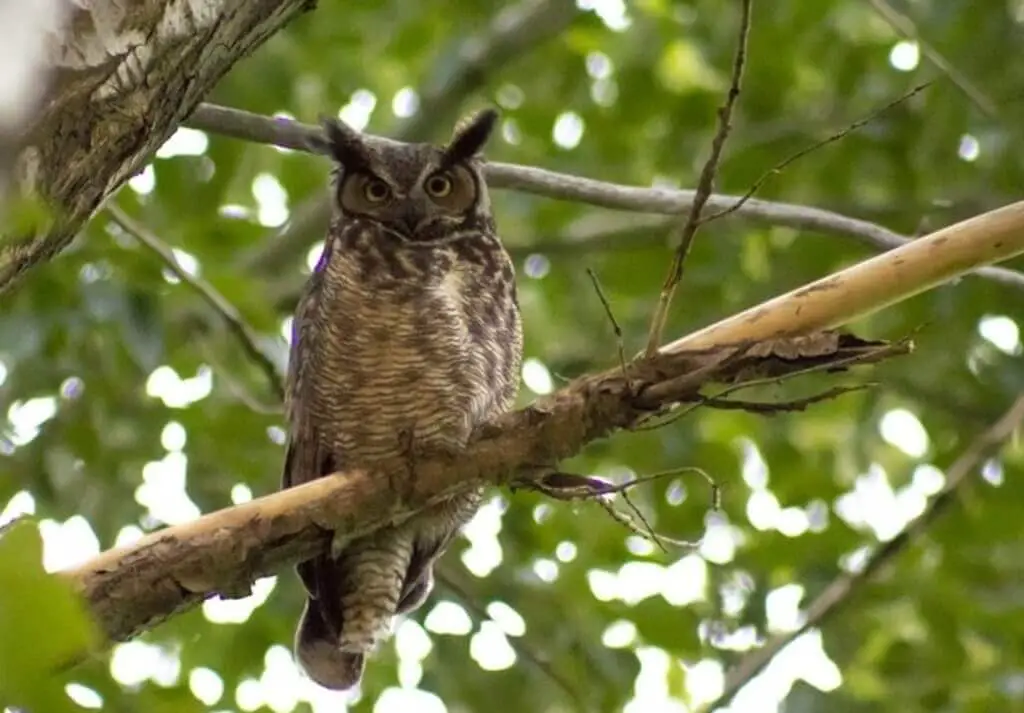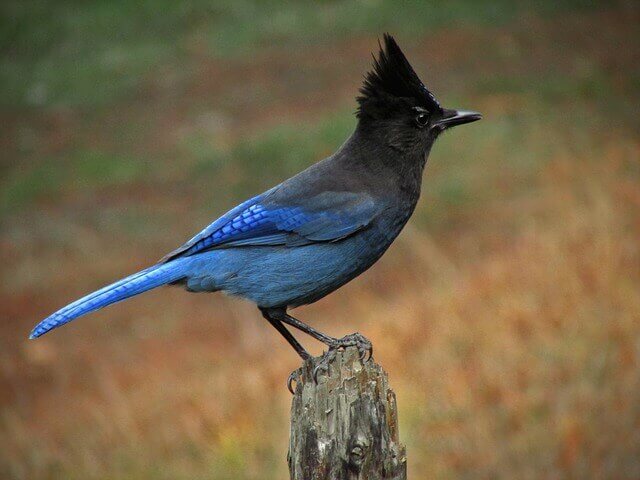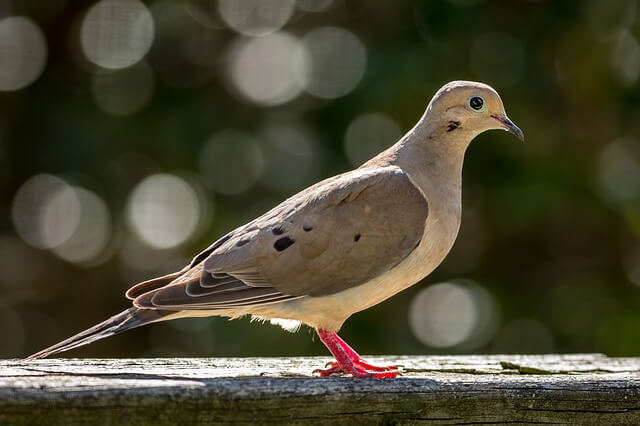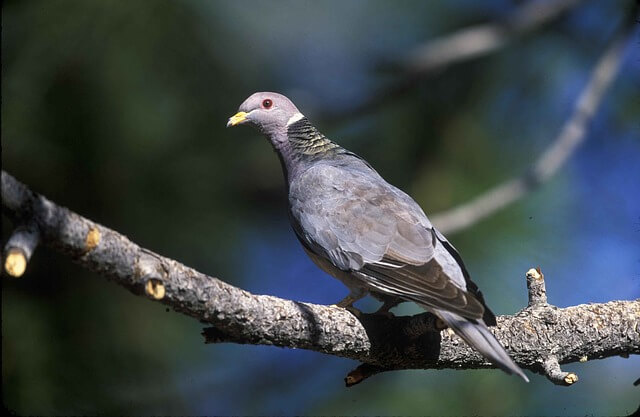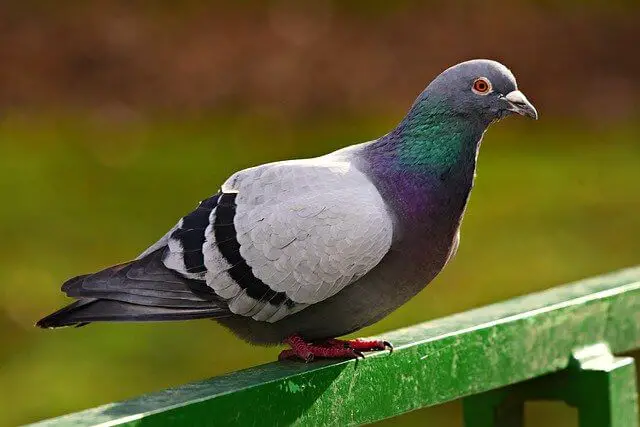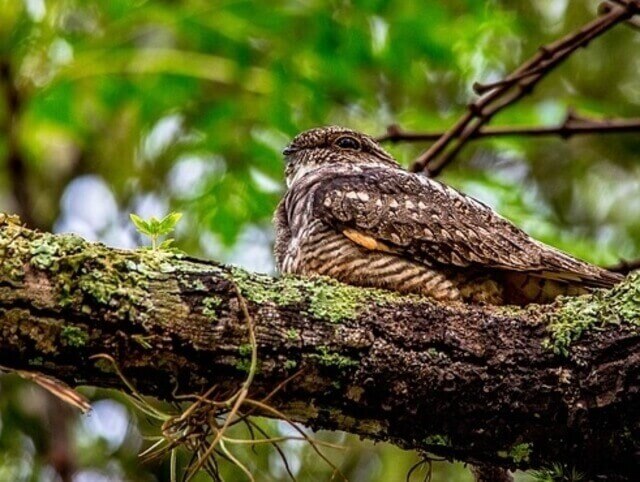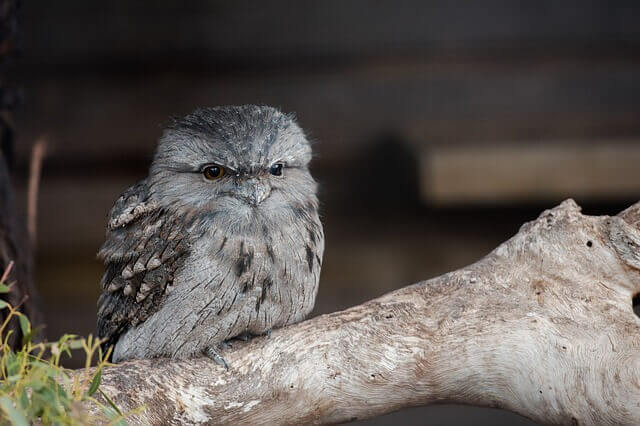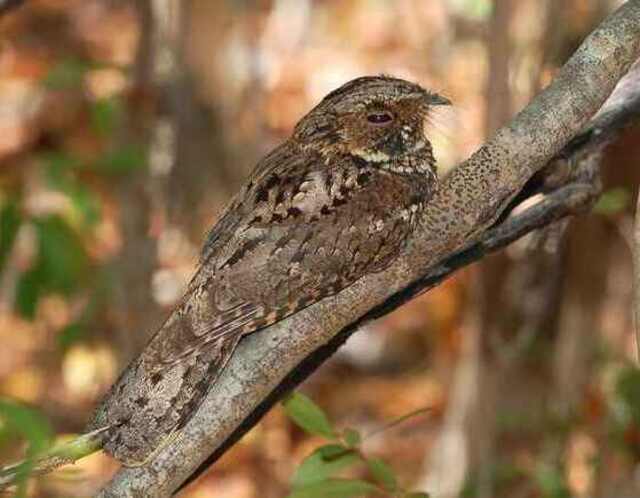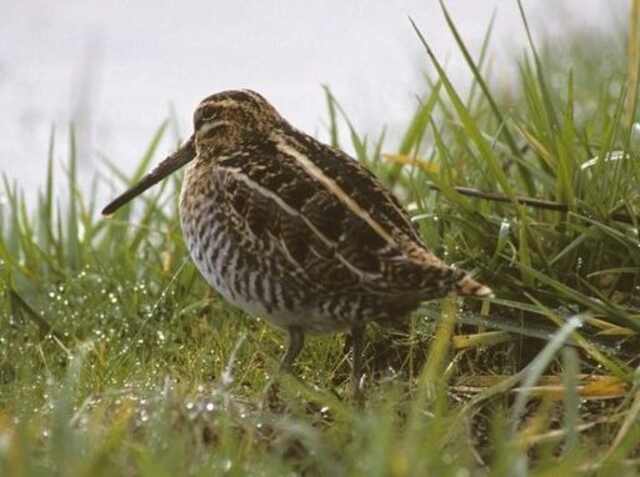Hold on tight, fellow bird enthusiasts, because I’ve got a feathery treat for you! You know what’s totally cool and mysterious? Owls! These birds have captured our imaginations for centuries with their big eyes, silent flight, and eerie hoots. But wait, what’s that sound? Is it an owl?
No way! It’s one of those sneaky birds that sound like owls but aren’t! Get ready to have your mind blown as we explore the top 10 birds that fool us with their owl-like calls. Get ready to spread your wings and fly into the fascinating world of birds that sound like owls but aren’t!
Table of Contents
Understanding Owl Calls
Types of Owl Calls
Territorial Calls
One of the most common owl calls is the territorial call, which is used by owls to establish and defend their territory. These calls are usually deep and resonate, letting other owls know that this area is claimed.
Mating Calls
Mating calls are more varied and can range from soft hoots to high-pitched screeches. These calls are used to attract potential mates and communicate with current partners.
Distinctiveness of Owl Calls
Each species of owl has its own unique call, making it easy to identify the type of owl based on its vocalizations alone. From the haunting hoots of the Great Horned Owl to the piercing screeches of the Barn Owl, there’s no mistaking the sound of an owl.
Reasons for Recognizable Owl Calls
Owl calls are loud and carry over long distances, making them an effective means of communication. Additionally, many owl species are nocturnal, so their calls stand out in the quiet of the night. And let’s not forget about their incredible vocal abilities – some owl species can even mimic other animals and sounds!
Appreciating Owl Calls
Overall, understanding owl calls is an essential part of appreciating these magnificent birds. So, next time you’re out in the woods and hear the distinctive call of an owl, take a moment to appreciate the beauty and uniqueness of these incredible creatures.
Birds That Sound Like Owls But Aren’t!
Steller’s Jays
- Length: 11.8-13.4 in (30-34 cm)
- Weight: 3.5-4.9 oz (100-140 g)
- Wingspan: 17.3 in (44 cm)
- Scientific Name: Cyanocitta stelleri
- Maps: Range Map – Sightings Map
- Sounds: Sounds and Calls
The Steller’s Jay is a type of bird that lives in the Western North America. This type of jay has an unusual call, which sounds like an owl. One reason for this may be because owls are their main predators, and they mimic sounds similar to these animals as a warning system.
Another possible explanation is that since owls only hunt at night, the birds have developed this trait, so they can hear when one is nearby before it sees them.
Handpicked Related Post: How to Attract Steller’s Jay to your Yard – Expert Tips!
Mourning Dove
- Length: 9.1-13.4 in (23-34 cm)
- Weight: 3.4-6.0 oz (96-170 g)
- Wingspan: 17.7 in (45 cm)
- Scientific Name: Zenaida macroura
- Maps: Range Map – Sightings Map
- Sounds: Sounds and Calls
Mourning Doves are a type of bird that can be found in North America, that most people know for their mournful cooing. The sound can be mistaken for an owl’s hoot, and it’s not uncommon to confuse the two.
When these birds go into their mating ritual, they create a series of hoots to attract mates. They usually do this during the night because there is less competition for attention then.
Handpicked Related Post: Facts About Mourning Doves – 10 Things You Need To Know!
Band-tailed Pigeon
- Length: 14-15 in (36-38 cm)
- Weight: 12.5 oz (354 g)
- Wingspan: 26 in (22 cm)
- Scientific Name: Patagioenas fasciata
- Maps: Range Map – Sightings Map
- Sounds: Sounds and Calls
The natural sounds that these pigeons make include a cooing sound made when feeding their young, and soft clucking sounds, which are typically made while flying overhead to roost for the night.
However, some people believe that these birds also produce low hooting noises like an owl at dusk or dawn.
Rock Pigeon
- Length: 11.8-14.2 in (30-36 cm)
- Weight: 9.3-13.4 oz (265-380 g)
- Wingspan: 19.7-26.4 in (50-67 cm)
- Scientific Name: Columba livia
- Maps: Range Map – Sightings Map
- Sounds: Sounds and Calls
Rock Pigeons make some calls that are not too different from the song of the Great Horned Owl, according to experts. For example, pigeons will often “whoo-hoo” at dusk or dawn while roosting and in response to predators near their nest, which is similar to owls’ territorial vocalizations during breeding season.
Sometimes when a pigeon gets startled, it makes loud clicking noises, which can sound like an owl. Rock Pigeons also make cooing sounds when they’re happy or courting a mate.
Handpicked Related Post: Birds that look like Pigeons (Photos, ID & Stats)
Common Nighthawk
- Length: 8.7-9.4 in (22-24 cm)
- Weight: 2.3-3.5 oz (65-98 g)
- Wingspan: 20.9-22.4 in (53-57 cm)
- Scientific Name: Chordeiles minor
- Maps: Range Map – Sightings Map
- Sounds: Sounds and Calls
Common nighthawks are found in the Americas, and they’re known for their distinctive calls can be compared to a noise that resembles an owl’s. The typical call of a nighthawk consists of one or two high pitched whistles followed by about 10 clicks.
These calls are much higher pitched than those made by an owl, which have slower and more regular frequency rates. It is interesting to note that when these birds fly, they make other sounds in addition to their characteristic chirping.
Eastern Whip-poor-will
- Length: 8.7-10.2 in (22-26 cm)
- Weight: 1.5-2.3 oz (43-64 g)
- Wingspan: 17.7-18.9 in (45-48 cm)
- Scientific Name: Antrostomus vociferus
- Maps: Range Map – Sightings Map
- Sounds: Sounds and Calls
There are many things that Whip-poor-wills sound like. Many people say they sound like owls, but do they really? Read on to find out! Whip-poor-wills make a long-drawn-out “whoo” sound that can last for over 2 seconds, and they usually don’t give any other calls.
Owls, on the other hand, have short bursts of screeches followed by some hooting which are much shorter than whip-poor-will.
Tawny Frogmouth
- Length: 13.8-20.9 in (35-53 cm)
- Wingspan: 25.6-38.6 in (65-98 cm)
- Weight: 7.1-22.9 oz. (200-650 g)
- Scientific Name: Podargus strigoides
- Maps: Range Map
- Sounds: Sounds and Calls
The Tawny Frogmouth is a type of bird that lives in Australia. They are nocturnal and are most active at night, eating small animals like insects, lizards, mice and birds.
The frogmouth’s call sounds very similar to an owl because they have a low-pitched voice with three types of vocalizations: territorial calls for mating purposes or when alarmed; contact calls between members of the same species; and a cry when hurt or attacked.
Chuck-Will’s-Widow
- Length: 11.0-12.6 in (28-32 cm)
- Weight: 2.3-6.6 oz (66-188 g)
- Wingspan: 22.8-24.0 in (58-61 cm)
- Scientific Name: Antrostomus carolinensis
- Maps: Range Map – Sightings Map
- Sounds: Sounds and Calls
Chuck-will’s-widow, the migratory bird that is often mistaken for an owl because of its calls at night, has a peculiar mating call. The Chuck-will’s-widow song starts with one low note and then builds to three high notes in rapid succession.
There are many variations on this basic pattern, but all share the same rhythm. Researchers think these birds have developed their call, so they can be heard above the forest noise at night.
Nightjar
- Length: 9.6–11.0 in. (24.5–28 cm)
- Weight: 1.8–3.6 oz (51–101 g)
- Wingspan: 20–23 in (52-59 cm)
- Scientific Name: Chordeilinae
- Maps: Range Map
- Sounds: Sounds and Calls
The Nightjar is a medium-sized bird that lives in the western United States and parts of Canada. The nightjar has a stocky build with a long tail. It has a thick, short neck and is mostly rufous colored with some white spots throughout.
In the daytime, Nightjars are secretive birds that hunt by night. They use their sharp hearing and keen eyesight to spot prey in the darkness. It’s often mistaken for the owls in its region, but it’s actually quite different. The Nightjar has a whistling call that sounds very much like an owl’s hoot.
Wilson’s Snipe
- Length: 10.6-12.6 in (27-32 cm)
- Weight: 2.8-5.2 oz (79-146 g)
- Wingspan: 16.1-17.3 in (41-44 cm)
- Scientific Name: Gallinago delicata
- Maps: Range Map – Sightings Map
- Sounds: Sounds and Calls
Wilson’s Snipe are a North American bird that ranges throughout the eastern half of the continent. These birds reside near bodies of water, and as such, their vocalizations can be fairly easily compared to those of owls.
Wilson’s Snipe make a high-pitched “hoo hoo” call in flight, and also produce various other notes when foraging or defending their territory. A quick listen to recordings of Wilson’s Snipe will reveal that they do indeed sound a great deal like owls.
North American Owl Sounds Audio
- Great horned owl calls and sounds (Audio clips by: All About Birds)
- Barn owl sounds
- Snowy owl sounds
- Eastern screech owl sounds
- Barred Owl sounds
- Great gray owl sounds
- Burrowing owl sounds
- Short-eared owl sounds
- Long-eared owl sounds
- Spotted owl sounds
- Northern saw-whet owl sounds
- Elf owl sounds
- Western screech owl sounds
- Northern hawk owls sounds
- Boreal owl sounds
- Flammulated owl sounds
- Northern pygmy owl sounds
- Whiskered screech owl sounds
- Ferruginous pygmy owl sounds
Frequently Asked Questions
Is it good luck to hear an owl?
Some people believe that if you hear an owl hooting outside your window at night, it is a sign of good luck. This may be because they see the owl as a symbol of wisdom and intelligence. Other people believe that if you hear an owl during the daytime, it means death is near for someone close to you.
What owl hoots 3 times?
Great-horned Owls hoot, three times. The first hoot is long and low-pitched; the second higher-pitched, and the third even higher-pitched call, which can last up to six seconds in length. It’s possible that they are trying to attract mates, or use this call to claim territory and ward off intruders.
What bird makes a screeching sound at night?
There are many different types of birds that make a screeching sound at night. The most common types are the Screech Owl, Barred Owl, or the Barn Owl. They all hoot loudly to call for their mate or when they’re scared in order to protect themselves from predators.
Are Frogmouth birds Owls?
The simple answer is no. The bird called a frogmouth has an owl-like appearance, but it’s not related to the owl and more closely related to ground-dwelling nightjars.
What is the difference between an owl and a Nightjar?
The owl is a nocturnal raptor, while the nightjar is active in the twilight hours. The owl has a sharp beak for hunting small animals, while the nightjar’s beak is weaker and more suited to eating insects. Owls have strong talons which enable them to catch prey with one swift strike; Nightjars’ feet are weaker, so they use their wings to catch prey,
Do Tawny Frogmouths hoot?
Tawny Frogmouths are the largest frogmouth in Australia and live mostly on trees near water or swamps where they can hunt frogs, snakes, and insects for food. Although they don’t hoot like their smaller relatives, tawny frogmouths have an unmistakable call that is often described as a soft ‘ooo.
Related Post: 17 Fun Facts About Owls in 2023: That Might Surprise You!

